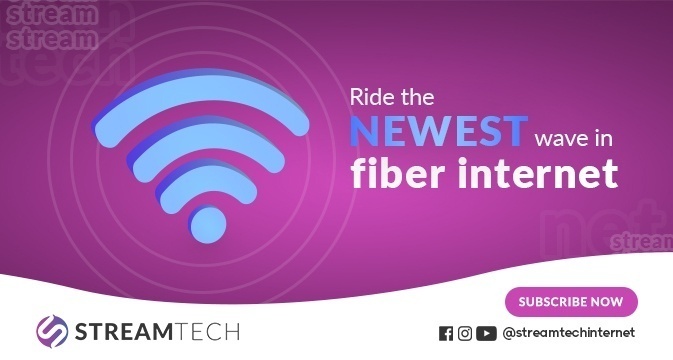Written by: Maine Dela Cruz
In the wake of COVID-19, people around the globe, including Filipinos, have shifted to digital alternatives. This is to carry out their day-to-day endeavors, as usual, be it at home, school, work, and play. The country is also one of the world’s most connected populations. Additionally, it has emerged as a major player in the information technology and business process management (IT-BPM) industries.
As the country’s IT-BPO industry grows so valuable, especially with the fast-growing fiber internet and internet provider Philippines’ coverage, it is expected to soon eclipse OFW remittances as the country’s primary source of revenue.
While the majority of the credit for this economic development should be given to the adaptable and English-proficient Filipino workforce, some must also be given to the agencies and organizations that assisted in laying the groundwork for local industry. Certainly, one of them is the Department of Information and Communications Technology (DICT).

What is the DICT?
The Department of Information and Communications Technology (DICT) is an agency in the executive branch of the Philippine government. Indeed, it is responsible for the planning, development, and promotion of the country’s information and communications technology (ICT) agenda in support of national development.
History of DICT
Before, several agencies functioned as the primary agency responsible for providing ICT services to Filipino citizens. Let’s explore how DICT came to be starting with its predecessors.
The Commission on Information and Communications Technology
The Commission on Information and Communications Technology, a preceding agency, was established on January 12, 2004, by President Gloria Macapagal Arroyo’s Executive Order No. 269 as a transitory measure until the establishment of a Department of Information and Communications Technology (DICT).
Agencies Under DICT
The CICT was comprised of agencies tasked with computer technology management as well as those whose primary mission is to deal with communication issues, namely the National Computer Center (NCC), the Telecommunications Office (TELOF), and the Department of Transportation and Communications (DOTC)’ communications branch.
The National Telecommunications Commission (NTC) and the Philippine Postal Corporation (Philpost) were also participating in the CICT to assist with policy coordination. The CICT would undergo several reorganizations and restructurings before becoming legally formed and recognized as the DICT.
Formation of an Executive Department
Numerous legislations have been introduced in the Philippine Congress to establish an Agency of Information and Communications Technology (DICT), transforming the CICT into an executive branch. On August 5, 2008, the House of Representatives adopted a consolidated bill, House Bill No. 4300, on third and final reading, and forwarded it to the Senate on August 11, 2008.
In the Senate, a consolidated bill, Senate Bill No. 2546, was approved by the Senate Committee on Science and Technology on August 19, 2008, but did not get beyond the second reading by the time Congress ended on February 5, 2010, thereby killing the bill. It will have to be reintroduced in the next Congress in both the House of Representatives and the Senate. Due to Congress’ inability to adopt the DICT Bill, the CICT’s legal foundation remains an executive order, which implies that the future President can remove it.
President Aquino III issued Executive Order No. 47 on June 23, 2011. “Reorganizing, renaming, and transferring the Commission on Information and Communications Technology and its connected agencies to the Department of Science and Technology, supervising their implementation, and for other objectives,” the directive adds. Additionally, “the Chairman and Commissioner seats of the CICT are therefore disbanded.” The BPO stakeholders were taken aback by the order and disappointed by the move.
Official Establishment
The agency began after then President Benigno Aquino III signed the Republic Act No. 10844 or “An Act Creating the Department of Information and Communications Technology” on May 20, 2016.
Numerous agencies within other executive departments, most notably the Department of Transportation and Communications (DOTC), that deal with communications activities and responsibilities were eliminated or moved to the newly formed department. Following that, the DOTC became the “Department of Transportation (DOTr).” The law establishes a six-month transition time “to ensure the complete transfer of duties, assets, and employees.” The bill became effective on June 9, 2016, establishing the DICT.
Who runs DICT?
As of this writing, Jose Arturo de Castro, DICT undersecretary for legal affairs, policy, planning, and finance, sat as acting DICT chief.
De Castro serves in an acting capacity while waiting for Malacañang to fill the vacancy created by the resignation of Gregorio “Gringo” Honasan, who is seeking a comeback in the Senate in next year’s elections.
What is the National ICT Development Agenda about?
The DICT will prioritize the following in accordance with the current administration’s ICT agenda the establishment of a National Broadband Plan with the objective of accelerating the construction of fiber optic cables and wireless technologies in order to increase internet speed. Also part of its mandate is to establish complimentary Wi-Fi in a limited number of public locations, including parks, plazas, public libraries, schools, government hospitals, railway stations, airports, and seaports. Lastly, it is responsible for the establishment of a national information and communication technology portal.
The National ICT Ecosystem Framework
In February 2019, the DICT partnered with a global non-profit organization to develop a central consolidating framework for the process of ICT policy formulation and governance.
The framework, termed NICTEF or the National ICT Ecosystem Framework, is described as the government’s answer to the rising demand for an authoritative reference covering the whole ICT agenda. It is a comprehensive framework for harmonizing the country’s information technology data. As a result, it enables the Department to turn raw data into useful information. Additionally, it intends to act as a lens and a strategic compass for responding to ICT concerns.
The framework’s purpose is to organize ICT data and possible applications in a way that is responsive to a society’s dynamic character. It is necessary for the creation of a knowledge society that maximizes the benefits of open government, amplifies the benefits of industrial applications, and multiplies chances for skill development.
What are the functions of DICT Philippines?

The DICT aims to provide every Filipino access to vital ICT infostructure and services. To achieve this goal and other department objectives, the DICT shall strengthen its efforts on the following focus areas:
1. Policy and Planning
Under policy and planning, the DICT is responsible for formulating, recommending, and implementing national policies, plans, programs, and guidelines that will promote the development and use of ICT with due consideration to the advantages of convergence and emerging technologies.
DICT is also mandated to formulate policies and initiatives, in coordination with the Department of Education (DepED), the Commission on Higher Education (CHED), and the Technical Education and Skills Development Authority (TESDA), to develop and promote ICT in education consistent with the national goals and objectives, and responsive to the human resource needs of the ICT and ICT-enabled services (ICT-ES) sectors.
It is also responsible for providing an integrated framework in order to optimize all ICT resources and networks for the identification and prioritization of all E-Government systems and applications as provided for the E-Government Masterplan and the Philippine Development Plan (PDP).
2. Improved Public Access
To improve public access, the DICT is responsible for prescribing rules and regulations for the establishment, operation, and maintenance of ICT infrastructures in unserved and underserved areas, in consultation with the local government units (LGUs), civil society organizations (CSOs), private sector, and the academe.
It shall also establish a free internet service that can be accessed in offices and public areas using the most cost-effective telecommunications technology, through partnerships with private service providers.
3. Resource-sharing and Capacity Building
In line with the E-Government goals and national objectives, the DICT shall synchronize and coordinate all national ICT strategies and efforts. It is also responsible for establishing a comprehensive inventory of current people, plans, programs, software, hardware, and established systems.
The department shall also assist agencies in developing guidelines for enforcing and administering ICT laws, standards, rules, and regulations. It will also examine, review, and assist government ICT research and development projects in collaboration with DOST and other organizations. DICT shall aid in the distribution of critical information to reduce disaster risk.
Also, to effectively create and operate government ICT infrastructures and systems, DICT should establish staff qualifications and establish initiatives to help ICT personnel progress in government.
In conjunction with the Department of Foreign Affairs (DFA) and other organizations, DICT should represent and negotiate on behalf of the Philippines in international organizations.
4. Consumer Protection and Industry Development
In conjunction with relevant agencies, the private sector, and international entities, the DICT must guarantee and preserve consumers’ and businesses’ rights to privacy, security, and confidentiality in ICT concerns.
It shall also work with the Department of Trade and Industry (DTI) and other government agencies, as well as the business sector, to promote trade and investment possibilities in ICT and ICT-ES.
The DICT must also develop rules for public-private partnerships in ICT projects for government agencies.
It is also responsible for improving the competitiveness of Philippine employees, businesses, SME’s and workers in the worldwide markets for ICT and ICT-ES would be a key component of the plan.
5. Cybersecurity Policy and Program Coordination
The DICT also has the mandate to develop a national cybersecurity strategy that minimizes national security concerns while promoting a peaceful, secure, open, and cooperative ICT environment.
It shall also provide prompt help to a computer emergency response team (CERT) in the suppression of real-time cybercrime and cyberattacks against important infrastructures and/or national security, offer proactive government countermeasures to all local and international cyberspace crises and threats; and affirm the public-private collaboration in the field of information sharing on cyber-attacks and threats, and coordinating actions to prevent and combat cybercrime, as stipulated in R.A. No. 10175.
The DICT is also responsible for monitoring cybercrime cases handled by cooperating law enforcement agencies and enabling international collaboration on cybercrime investigation, intelligence, training, and capacity building. And performing all other responsibilities relating to cybercrime prevention and suppression, including capacity building, and such other responsibilities and functions as may be necessary for the appropriate execution of R.A. No. 10175.
6. Countryside Development
The DICT is also focused on developing and supporting ICT-based industries in the many rural regions of the country, working with LGUs and other stakeholders in the planning and implementation of ICT infrastructure in these areas. In fact, such an effort would make these underdeveloped areas a preferred location for BPO centers and other ICT industries.
For more comprehensive information about the DICT, visit its official website.
Importance of Accessibility in Communications Technology

The DICT ensures that all government websites adopt the Web Content Accessibility Guidelines (WCAG). WCAG is developed through the W3C process in cooperation with individuals and organizations around the world, with the goal of providing a single shared standard for web content accessibility that meets the needs of individuals, organizations, and governments internationally.
Accessibility Statement
The DICT ensures that the National Government Portal officially adopts the Web Content Accessibility Guidelines (WCAG 2.0) as the accessibility standard for all its related web development and services. WCAG 2.0 is also an international standard, ISO 40500. This certifies it as a stable and referenceable technical standard.
WCAG 2.0 contains 12 guidelines organized under 4 principles: Perceivable, Operable, Understandable, and Robust (POUR for short). These are testable success criteria for each guideline. The measurement of compliance with these criteria is through three levels: A, AA, or AAA.
All National Government Portal servers and content are currently moving towards WCAG Level A compliance. Work is being done to make the system fully compliant with this level.
Shortcut Keys Combination
Shortcut keys are vital for ease of access. Here are the activation combination keys for each browser:
1. Accessibility statement (Combination + 0)
This is a statement page that will show the available accessibility keys.
2. Home Page (Combination + H)
This accessibility key redirects to the homepage.
3. Main Content (Combination + R)
This is the shortcut for viewing the content section of the current page.
4. FAQ (Combination + Q)
This combination is the shortcut for the FAQ page.
5. Contact (Combination + C)
It is the shortcut for contact page or form inquiries.
6. Feedback (Combination + K)
This combination activates the shortcut for the feedback page.
7. Site Map (Combination + M)
This is the shortcut for the site map (footer agency) section of the page.
8. Search (Combination + S)
This combination activates the shortcut for the search page.
9. Chrome for Linux
For Chrome for Linux, press (Alt + Shift + shortcut_key).
10. Chrome for Windows
For Chrome for Windows, press (Alt + shortcut_key).
11. For Firefox
For Firefox, press (Alt + Shift + shortcut_key).
12. For Internet Explorer
For Internet Explorer, press (Alt + Shift + shortcut_key) then press (enter).
13. On Mac OS
For Mac OS, press (Ctrl + Opt + shortcut_key).
Powering Our Digital Thrusts through Fast and Reliable Fiber Internet

Streamtech is committed to being an internet provider in the Philippines that you can rely on. And this is by providing fast and reliable fiber internet as we live in this digital age.
Certainly, as a new internet provider in the Philippines, we got your back. We also make sure to enable homes and companies like yours to maximize their budgets. Additionally, we ensure that you get the most out of your budget by offering economical fiber internet options. With Streamtech, you can boost your home productivity while still entertaining yourself. Additionally, through our agreement with Planet Cable, we offer internet cable bundles.
We provide subscribers in franchise regions with dedicated internet access. Additionally, we provide leased lines, and WiFi services over our own fiber-optic backbone link. With our affordable fiber options, users can have a guarantee of a fast and dependable connection. And this allows for easy access to the online material they require.
Additionally, we assist in ensuring that your entire home benefits from the Streamtech distinction. Indeed, our Extendifi WiFi Extender equips your whole space with Streamtech’s lightning-fast connection. Recognize why an increasing number of individuals around the country are making the transition and exceeding their limitations.
You may also visit our website now to learn more about our services.









